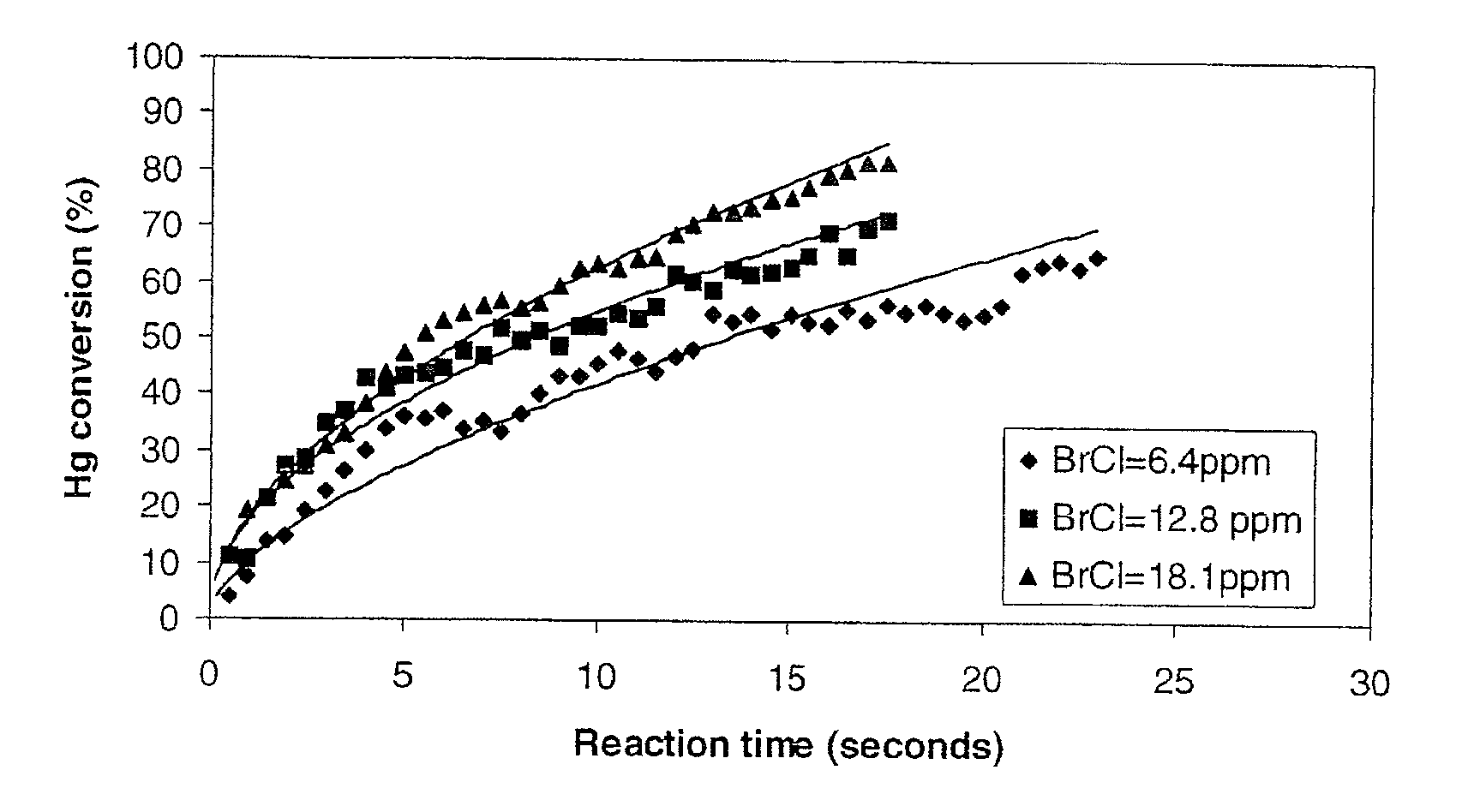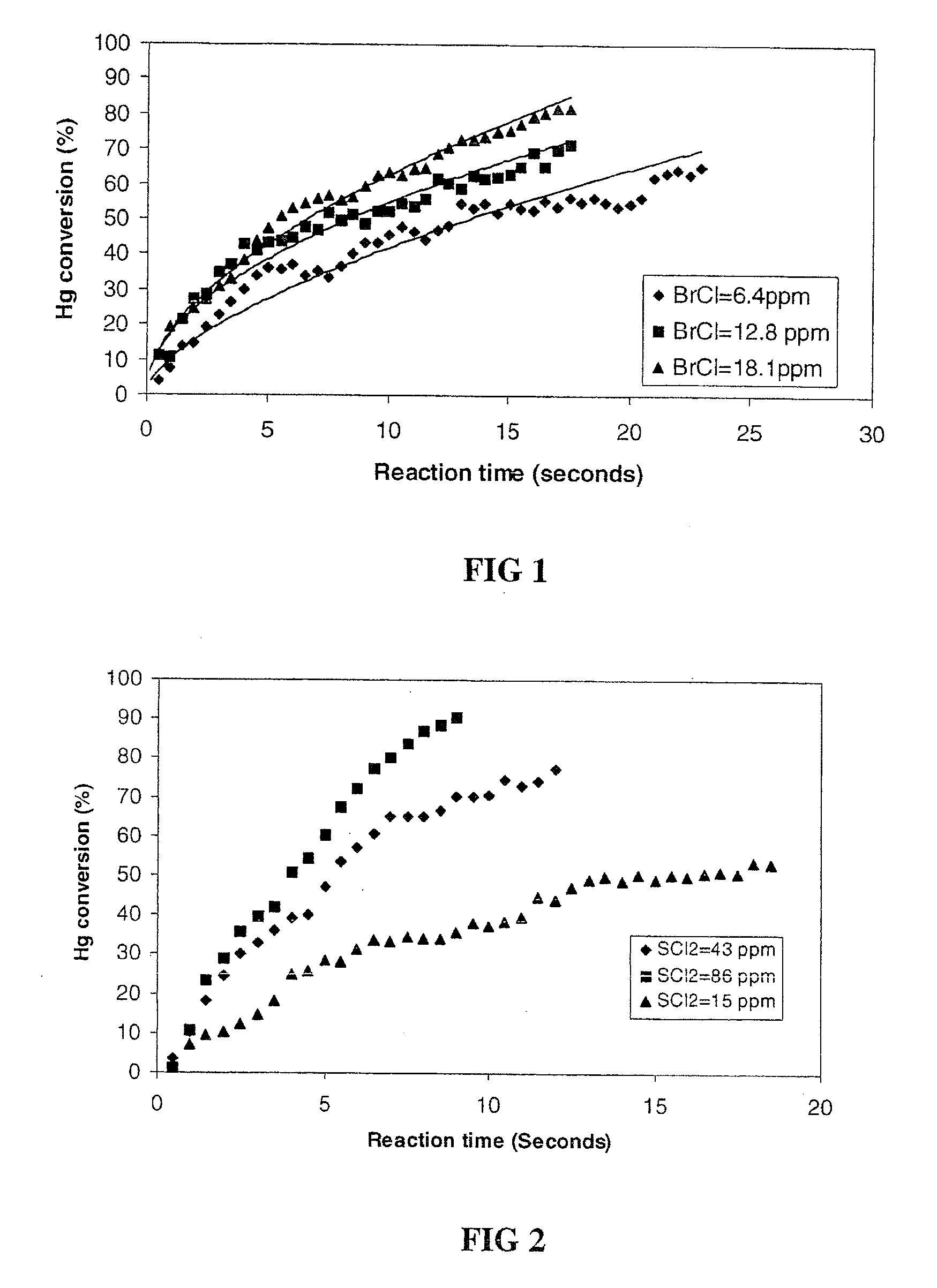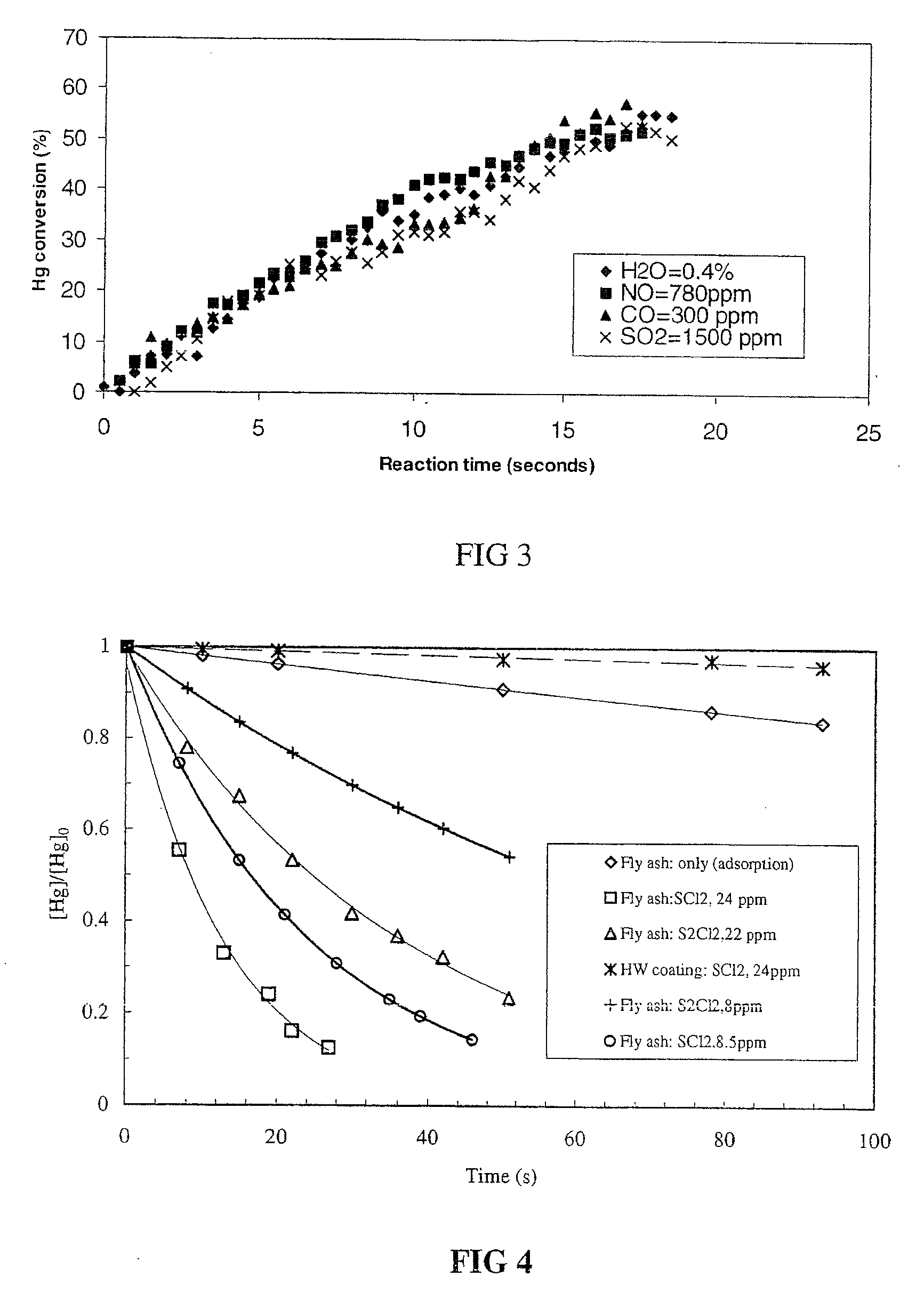Method for scavenging mercury
a mercury and scavenging technology, applied in the direction of dispersed particle separation, chemistry apparatus and processes, separation processes, etc., can solve the problems of environmental and ecological problems, easy escape of wet scrubber, and inability to transpose control to coal-fired power plants
- Summary
- Abstract
- Description
- Claims
- Application Information
AI Technical Summary
Problems solved by technology
Method used
Image
Examples
example 1
Mercury Scavenging Using Bromochloride
[0039]Mercury gas was mixed with bromochloride gas in a reactor. The decay of the mercury gas concentration as a function of reaction time was monitored by cold vapor atomic absorption spectroscopy. In this non-limiting embodiment the mercury gas and gas oxidants were introduced into the reactor by injection with a syringe. Initially, the reactor was evacuated nitrogen gas saturated with mercury gas was injected with a syringe to the reactor to reach a pressure of about 250 torr. The pressure in the reactor is raised to 500 torr with nitrogen. A volume of known concentration of bromochloride gas in nitrogen was injected by a syringe into the reactor before the pressure was quickly brought to 760 torr (1 atm) with nitrogen. The initial bromochloride gas concentrations studied were 6.4 ppm, 12.8 ppm, and 18.1 ppm. The initial mercury concentrations were 0.18 ppm in all experiments. The half life (50% conversion) of mercury vapor was measured to be...
example 2
Mercury Scavenging Using Sulfur Dichloride
[0040]Mercury gas was mixed with sulfur dichloride gas in a reactor. The decay of the mercury gas concentration as a function of reaction time was monitored by cold vapor atomic absorption spectroscopy. In this embodiment, the mercury gas and sulfur dichloride gas were introduced into the reactor by injection with a syringe. A volume of nitrogen gas saturated with mercury gas was injected with a syringe to reach a pressure of about 250 torr. The pressure in the reactor was raised to 500 torr with nitrogen. A volume of known concentration of sulfur dichloride gas in nitrogen was injected by a syringe into the reactor before the pressure was quickly brought to 760 torr (1 atm) with nitrogen. The initial sulfur dichloride gas concentrations studied were 15 ppm, 43 ppm, and 86 ppm. The initial mercury concentrations were 0.18 ppm in all experiments. The half life (50% oxidation) of mercury vapor was measured to be 14 sec with 15 ppm sulfur dichl...
example 3
Simulation of Waste Gas Components on the Scavenging of Mercury
[0041]To demonstrate the effect of different waste gas components (H2O, NO, CO, and SO2) on the oxidation rate of mercury vapor by sulfur dichloride as a function of time at 24° C. experiments were performed mixing mercury gas with sulfur dichloride gas in the presence of different waste gas components in a reactor. The decay of the mercury gas concentration as a function of reaction time was monitored by cold vapor atomic absorption spectroscopy. The mercury gas, sulfur dichloride gas, and waste gas component were introduced into the reactor by injection with a syringe. The initial concentrations of mercury gas, sulfur dichloride, water vapor (H2O), nitric oxide (NO), carbon monoxide (CO), and sulfur dioxide (SO2) were 0.18 ppm, 15 ppm, 0.14%, 780 ppm, 300 ppm, and 1500 ppm, respectively. All waste gas components studied didn't exhibit a significant decrease in the oxidation rate of mercury. FIG. 3 shows the results.
PUM
 Login to View More
Login to View More Abstract
Description
Claims
Application Information
 Login to View More
Login to View More - R&D
- Intellectual Property
- Life Sciences
- Materials
- Tech Scout
- Unparalleled Data Quality
- Higher Quality Content
- 60% Fewer Hallucinations
Browse by: Latest US Patents, China's latest patents, Technical Efficacy Thesaurus, Application Domain, Technology Topic, Popular Technical Reports.
© 2025 PatSnap. All rights reserved.Legal|Privacy policy|Modern Slavery Act Transparency Statement|Sitemap|About US| Contact US: help@patsnap.com



